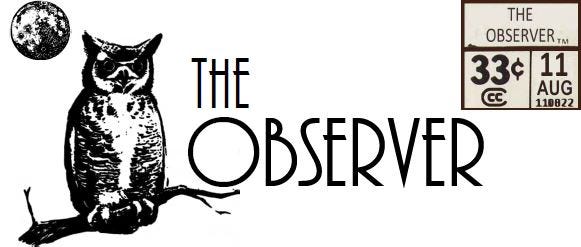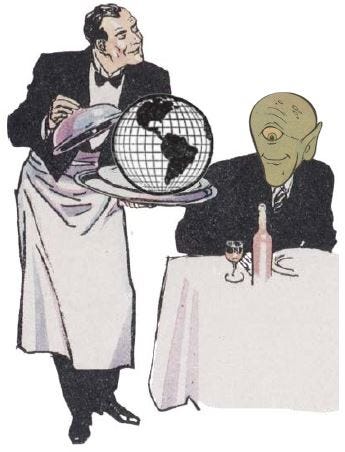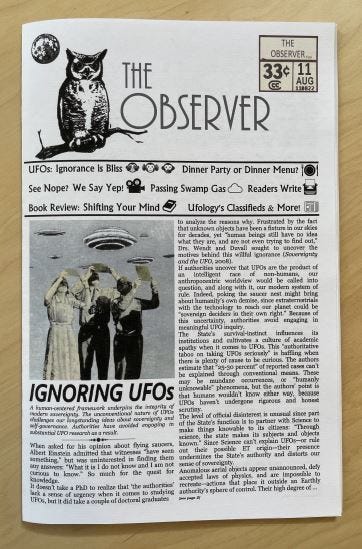Walking in on ET’s Dinner Party
Will Earthlings be considered Dinner Guests, or the Dinner Menu?
by Michael Harris Hoffman
If you think METI (Messaging to Extraterrestrial Intelligence) spells trouble, just wait for the BITG (Beacon in the Galaxy) initiative. It’s one thing to watch the stars with radio telescopes in hope of picking up messages from extraterrestrial/ET civilizations. It’s another to broadcast messages to them in hope of drawing attention from who knows who or what.
A provocative paper recently posted online at arXiv adds new fervor to the debate. “A Beacon in the Galaxy: Updated Arecibo Message for Potential FAST and SETI Projects” announces that this BITG initiative means “An updated, binary-coded message has been developed for transmission to extra- terrestrial intelligences in the Milky Way galaxy. The proposed message includes basic mathematical and physical concepts to establish a universal means of communication followed by information on the biochemical composition of life on Earth…” as well as nude depictions of the human form and a handy guide to our planet’s location. The BITG initiative improves on the quality of any interstellar message sent or proposed until now. It’s time for a thought experiment.
Let’s assume the message is sent. It’s brilliantly successful in communicating our DNA and morphology. ET recipients get the point completely. What are some possible outcomes?
A flowering astrobiology. The subsequent exchange of information opens our understanding of biology in ways thus far unimaginable. Perhaps the galaxy is dotted with civilizations that blossom in a long- distance dialogue of worlds.
The galactic swap. The subsequent exchange is interesting. But that’s it. Just interesting. Humanity joins in on an interstellar fun-fact swap. So, you’re a carbon-based life form. Neat. We’re silicon-based. Guess what we do for fun.
Chow time. Eager high tech dinner bells clang across the Milky Way. Promising new culinary vistas open for adventurous eaters from all over the Galaxy. It’s not clear if they’re coming this way just for us, or also to devour everything else on the planet.
A place at the galactic table. We’ve made contact, and arrived in the highest meaning of the word. We’re escorted down an immense hallway. Table after table seating exotic beings. Looking for our seat. We reach the end of the hall. A modest doorway leads us to another room, one that’s really more an interplanetary nook. The table is small. The guests full of energy but seemingly clueless. There’s our seat. We’ve earned our place. At the galactic kid’s table.
An interesting array of possibilities. The potential down-side may outweigh the benefits. With our planetary fate on the line, it seems time to look to terrestrial authorities for wise counsel. The good news is that highly intelligent protocols have been put forward in the scientific community to furnish guidance on the interstellar search for extraterrestrial intelligence (SETI.) For those who want someone to take charge, the bad news is that these protocols are the product of private initiative. Where radio or other forms of interstellar communication are concerned there’s no law, no treaty, no one in charge. Anyone who has the technology at hand can signal to unknown extraterrestrial civilizations at will unless local authorities or digital age luddites stop them.
Working from extreme scenarios we could, on one hand, be candidates for listing on ET’s dinner party menu. On the other, we could be candidates for inclusion on ET’s dinner party guest-list. No one has the authority to decide what risks are worth it. An informed debate on the wisdom of proactive messaging to extraterrestrial intelligence in deep space would benefit from consideration of scenarios, like those presented here, rather than generic abstractions. We need to move beyond a “good ET” - “bad ET” risk assessment and take a more nuanced approach. If we one day walk in on ET’s dinner party, we should have preplanned courses of action in place for what we do next.










